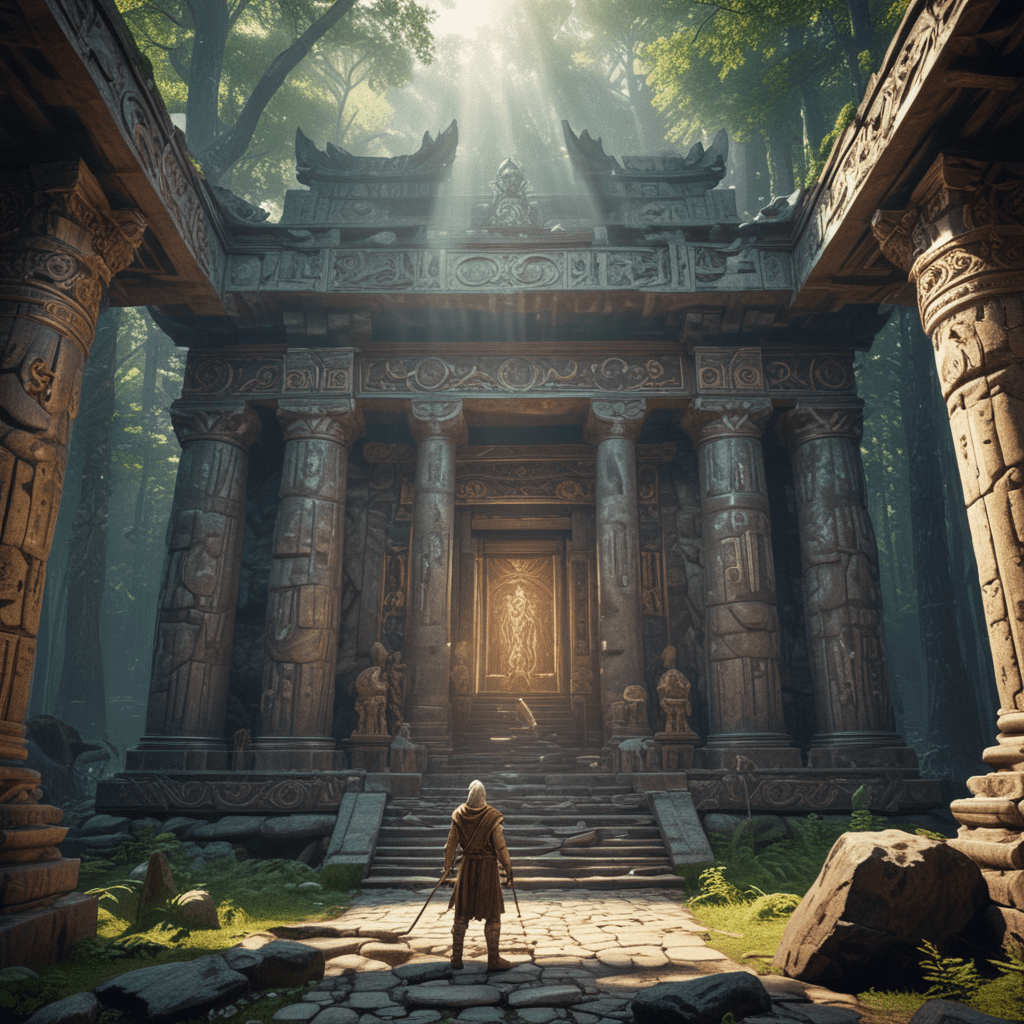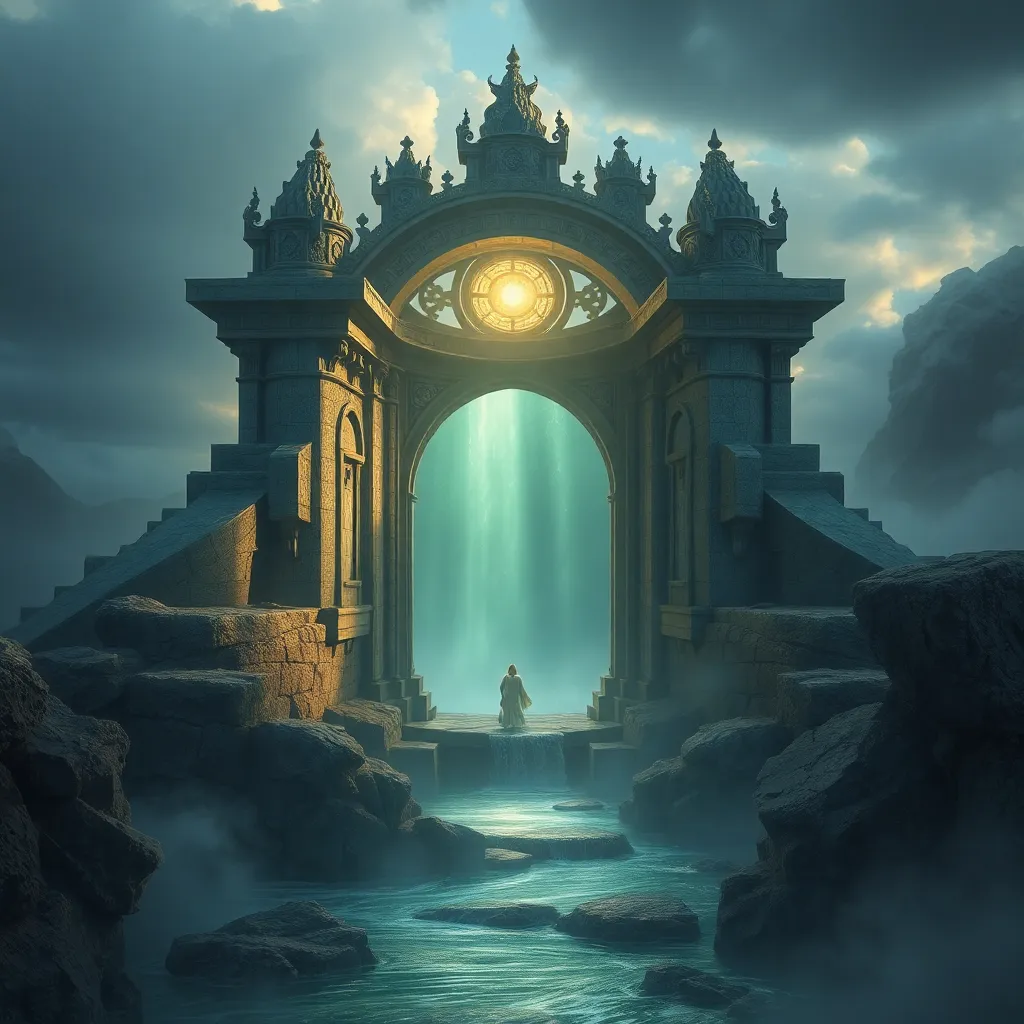Introduction: Ancient Legends of Finnish Sacred Temples
Nestled amidst the pristine landscapes of Finland, the sacred temples of ancient Finnish mythology were believed to be the dwelling places of the gods and spirits that shaped the world. These enigmatic sanctuaries played a pivotal role in the lives of the Finnish people, serving as places of worship, ritual gatherings, and spiritual connection. As we delve into the rich tapestry of Finnish mythology, let us explore the captivating legends of these sacred temples and the deities they housed.
The Temple of Ukko: Abode of the Sky God
Ukko, the mighty sky god, reigned supreme in Finnish mythology. His sacred temple, perched atop a towering mountain, was said to be a place of thunder and lightning, where the celestial storms brewed. Ukko's temple was a symbol of his power and authority over the heavens, and the Finnish people revered him as the guardian of the sky and the dispenser of justice.
The Forest Temple of Tapio: Realm of the Forest Spirit
Tapio, the benevolent spirit of the forest, presided over a sacred temple hidden deep within the primeval woods. This temple was said to be a sanctuary of peace and tranquility, where the trees whispered secrets to the wind and the animals lived in harmony. Tapio's guidance and protection were sought by hunters and travelers alike, and his temple became a place of reverence for those who ventured into the wilderness.
The Water Temple of Ahti: Home of the Water Goddess
Ahti, the enigmatic water goddess, ruled over the vast bodies of water that surrounded Finland. Her sacred temple was believed to lie beneath the shimmering waves of a secluded lake. Ahti was both revered and feared by the Finnish people, as she could bestow blessings or unleash storms upon those who crossed her path. Fishermen and sailors prayed to Ahti for safe voyages and bountiful catches, while coastal communities sought her protection from the treacherous waters.
The Underworld Temple of Tuoni: Domain of the God of Death
Tuoni, the grim god of the underworld, held sway over a desolate and shadowy temple that was the final resting place for the souls of the departed. Tuoni's temple was a place of mystery and dread, where the living feared to tread. It was said that those who ventured into his domain were forever trapped within its icy grip.
The Temple of Lemminkäinen: Sanctuary of the Trickster Hero
Lemminkäinen, the charismatic and mischievous trickster hero, was celebrated in Finnish mythology. His sacred temple was said to be a place of revelry and adventure, where the lines between good and evil blurred. Lemminkäinen's temple was a sanctuary for those who embraced the thrill of the unknown and sought to challenge the boundaries of the mundane.
The Temple of Väinämöinen: Wise Old Sage and Creator
Väinämöinen, the venerable sage and creator in Finnish mythology, possessed a sacred temple that was a repository of ancient wisdom and knowledge. This temple was said to be situated on an island at the center of the cosmic sea. Väinämöinen's temple was a place of pilgrimage for those seeking enlightenment, guidance, and inspiration. It was believed that within the temple's hallowed halls, the secrets of creation and the mysteries of the universe were revealed to those who were worthy.
The Sacred Grove of Ilmarinen: Place of Forging and Craftsmanship
Ilmarinen, the master smith and craftsman of Finnish mythology, had his sacred grove in the heart of a majestic forest. This grove was a sanctuary for artisans and metalworkers, who sought Ilmarinen's blessing and guidance in their endeavors. Within the grove's sacred confines, Ilmarinen's forge roared with creativity, and the sound of hammers on metal filled the air. It was said that the legendary Sampo, a magical artifact that brought prosperity and abundance, was forged within the depths of Ilmarinen's sacred grove.
The Temple of Louhi: Mistress of the Underworld
Louhi, the powerful and enigmatic mistress of the underworld, ruled over a magnificent temple in the depths of Tuoni, the realm of the dead. Louhi's temple was a place of both awe and trepidation, as it was believed to be a gateway between the world of the living and the world of the departed. Those who dared to venture into Louhi's temple sought her favor or knowledge, knowing that she possessed the secrets of life and death.
Legacy and Influence: Finnish Mythology in Modern Culture
The legends of the sacred temples of Finnish mythology have had a profound and enduring influence on Finnish culture and identity. These temples have served as symbols of the interconnectedness between the natural world, the supernatural realm, and the human experience. The stories and traditions surrounding these sacred sites continue to inspire artists, writers, and musicians, enriching the cultural tapestry of Finland.
FAQ:
Q: What were the sacred temples of Finnish mythology used for?
A: The sacred temples were believed to be the dwelling places of gods and spirits, and they were used for worship, ritual gatherings, and spiritual connection.
Q: Who was the sky god in Finnish mythology?
A: Ukko was the mighty sky god who ruled over thunder, lightning, and justice.
Q: Which goddess presided over the forest?
A: Tapio was the benevolent spirit of the forest, protector of animals and guide to hunters and travelers.
Q: Who was the god of the underworld in Finnish mythology?
A: Tuoni was the grim god of the underworld, who ruled over the realm of the dead.



